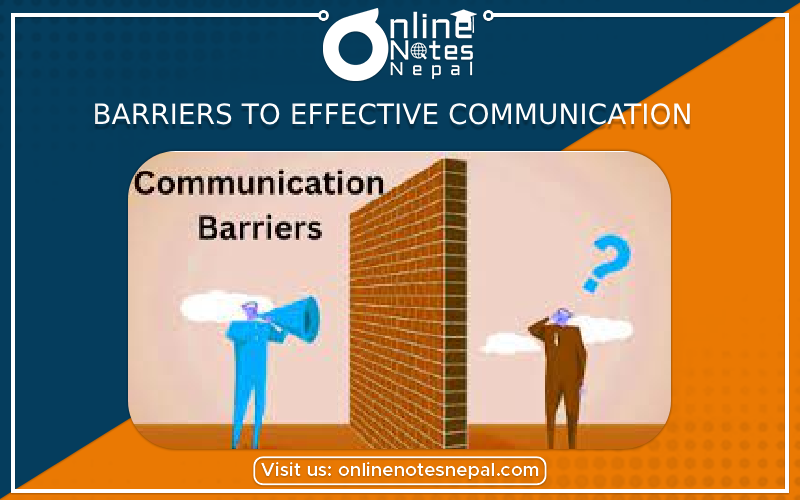Published by: Dikshya
Published date: 28 Jul 2023

Effective communication is crucial for fostering understanding, cooperation, and productivity in personal and professional settings. However, various barriers can impede the smooth flow of information and lead to misunderstandings. Recognizing these barriers is essential for overcoming them and improving communication. Here are some common barriers to effective communication:
1. Language Barriers: When individuals do not share a common language or have limited proficiency in the language being used, misinterpretations and miscommunications can occur. This barrier is particularly relevant in multicultural or international settings.
2. Misunderstandings and Semantics: Differences in interpretation of words, phrases, or gestures can lead to misunderstandings. People may have different meanings attached to certain words or phrases based on their cultural or regional backgrounds.
3. Emotional Barriers: Emotional states such as anger, fear, stress, or anxiety can hinder effective communication. When individuals are emotionally charged, they may react impulsively, leading to distorted communication.
4. Physical Barriers: Physical distance, noisy environments, or technological issues (e.g., poor internet connection during virtual communication) can create barriers that make it difficult to convey or receive messages effectively.
5. Cultural Differences: Diverse cultural norms, values, and communication styles can cause misunderstandings. For instance, certain cultures may have indirect communication styles, while others prefer direct and explicit expressions.
6. Preconceived Notions and Stereotypes: Prejudices and stereotypes can influence how individuals perceive and interpret information, leading to biased communication and unfair judgments.
7. Lack of Clarity and Precision: Vague or ambiguous messages can result in confusion and incomplete understanding. Effective communication requires clear and precise articulation of ideas.
8. Non-Verbal Communication: Non-verbal cues such as body language, facial expressions, and tone of voice play a significant role in communication. Misinterpreting or misreading these cues can lead to misunderstandings.
9. Information Overload: When individuals receive an excessive amount of information, they may find it challenging to process and retain the key points, leading to communication breakdowns.
10. Lack of Active Listening: Poor listening skills, such as interrupting, daydreaming, or not paying attention, hinder effective communication and can lead to missing essential information.
11. Status and Power Differences: Communication may be inhibited when there are significant status or power differentials between individuals, as it can lead to hesitation, fear, or reluctance to express ideas openly.
12. Lack of Feedback: Without feedback, communicators may not know if their message has been understood correctly. The absence of feedback can perpetuate misunderstandings and hinder effective communication.
13. Psychological Barriers: Personal beliefs, values, and biases can influence how individuals perceive and respond to messages, affecting the communication process.
14. Organizational Barriers: Hierarchical structures, bureaucratic procedures, and poor communication channels within organizations can impede the smooth flow of information.
15. Time Constraints: Lack of sufficient time to communicate effectively can lead to rushed conversations and inadequate information exchange.
Overcoming these barriers to effective communication involves active efforts to improve listening skills, fostering open and honest communication, recognizing and respecting cultural differences, and using clear and precise language. Additionally, promoting a positive and inclusive communication environment can help mitigate many of these barriers.